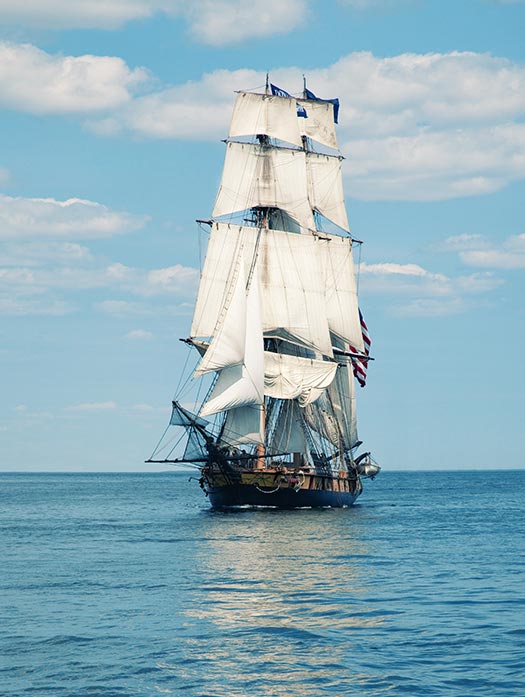Select Page
The Pelagic Zone
The word pelagic is derived from the Greek work pélagos, meaning open ocean. It is the name for oceanic water not in direct contact with a shore or the bottom.
It is by far the largest aquatic biome terms of volume, but in comparison to many of the other biomes, it is a desert.
The pelagic zone is further divided up into vertical sub-zones as seen in the image below. This biome vertically joins with the Deep Sea biome once the illuminated surface layers are passed. For more information on the deeper pelagic waters, please also visit our deep sea biome page.

The Pelagic zone

Our large Oceans
Seen from space, Earth is truly a water planet. About 71 percent of Earth’s surface is water, and the average depth of the oceans is just under 4,000 meters (about 13,000ft.) Life on the planet has a few basic requirements to survive. We need energy of some kind, and to most animals that mean that they will have to eat. To get food, an animal has to be where there is food, or be able to go where there is food. The same goes with reproduction. Many marine organisms reproduce sexually and need to find a mate to reproduce.
Most other biomes are in close proximity to land of some kind which usually helps in both these cases, but the pelagic zone is simply defined as waters that are not directly connected to land in any direction, neither horizontally nor vertically. So organisms living in the pelagic zone must go where there is food and locate a partner to reproduce.
In the aquatic world, the clear blue pelagic waters are somewhat of a water-desert. The biomass out here is much lower than many coastal waters per unit volume, but there is still a lot of organisms that live here.
A lot of the marine fish we eat come from pelagic fisheries. Some commercially important species of fish are Pacific mackerel, jack mackerel, Pacific sardine and Blue-fin tuna. Unfortunately today, many fish stocks have been over-exploited and some species, such as many shark species, even face extinction due to overfishing. On top of this, many pelagic animals that are not targeted by the fishing boats, such as dolphins and turtles, sometimes also get affected by negative fishing methods.
Did you enjoy that 360° experience? If so, watch more.
